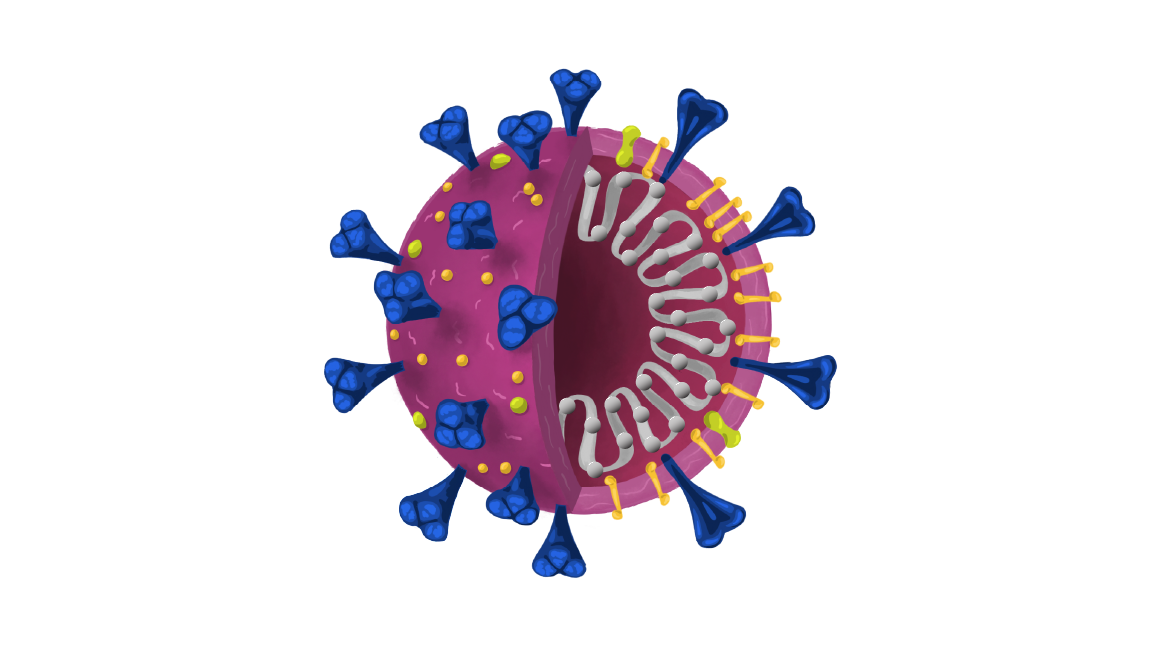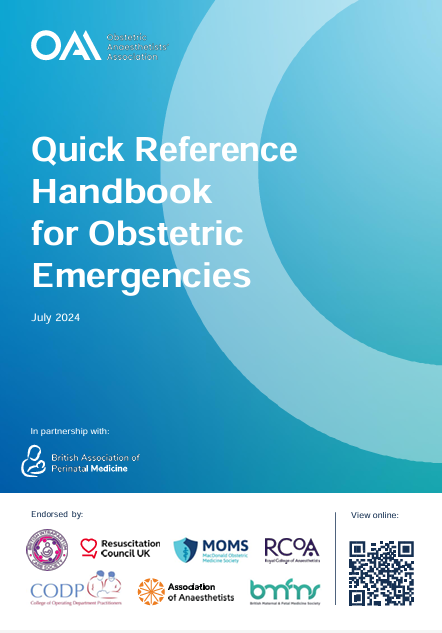
 Looking for clinical resources and information related to COVID-19? Visit the COVID-19 guide.
Looking for clinical resources and information related to COVID-19? Visit the COVID-19 guide.
 Quick Reference Handbook for Obstetric Emergencies
by
The Quick Reference Handbook for Obstetric Emergencies (Obs QRH) is a collection of action card guides for medical and resuscitation emergencies in hospitals. These guides are intended to help the multidisciplinary teams caring for birthing people and their babies. The guides have purposely been written in a similar format to the Association of Anaesthetists Quick Reference Handbook and the Resuscitation Council UK Quick Reference Handbook, to aid familiarity.
The aim is to ensure a co-ordinated, structured and all-encompassing response to an emergency, at a time when care givers may be unfamiliar with other team members and have a high cognitive load.
Please ensure that you are familiar with the Obs QRH, so that these guides can be of maximum help to the team, at the time of a crisis.
Remember, simply having the Obs QRH in your department won’t help in a crisis; it’s a tool that teams must practise using. For more information see implementation.
Quick Reference Handbook for Obstetric Emergencies
by
The Quick Reference Handbook for Obstetric Emergencies (Obs QRH) is a collection of action card guides for medical and resuscitation emergencies in hospitals. These guides are intended to help the multidisciplinary teams caring for birthing people and their babies. The guides have purposely been written in a similar format to the Association of Anaesthetists Quick Reference Handbook and the Resuscitation Council UK Quick Reference Handbook, to aid familiarity.
The aim is to ensure a co-ordinated, structured and all-encompassing response to an emergency, at a time when care givers may be unfamiliar with other team members and have a high cognitive load.
Please ensure that you are familiar with the Obs QRH, so that these guides can be of maximum help to the team, at the time of a crisis.
Remember, simply having the Obs QRH in your department won’t help in a crisis; it’s a tool that teams must practise using. For more information see implementation.
 Got big ideas for this ANZCA resource guide? Why not become our advocate? Highlight valuable resources for college fellows and trainees while earning CPD hours!
Got big ideas for this ANZCA resource guide? Why not become our advocate? Highlight valuable resources for college fellows and trainees while earning CPD hours!
 Contact ANZCA Library for more info: library@anzca.edu.au
Contact ANZCA Library for more info: library@anzca.edu.au

Webinars
Enter password and click the full-screen icon to view full-screen.
2 April 2022
9 February 2021
Documents
Quick links
About ANZCA
Copyright © Australian and New Zealand College of Anaesthetists.